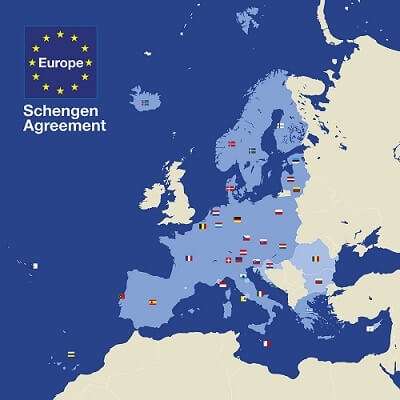
Having to commute daily to your workplace in another city is an everyday affair these days. But what about travelling every day to work from one country to another? Pretty cool, isn’t it!
The Schengen Area is formed after the Schengen Agreement of 1985 signed in Schengen, a village in Luxembourg. The Schengen Area of Europe follows an open border system that encompasses 26 European countries.
These countries follow a standard visa policy that groups them together under a single jurisdiction for international travel purposes. The countries under the Schengen Area have officially abolished all passports, which allow free entry or exit at their mutual borders.
Today, the Schengen Area encompasses most EU countries except for Bulgaria, Croatia, Cyprus, Ireland and Romania. However, Bulgaria, Croatia, and Romania, are legally obliged to join the area in the coming years. Ireland opted to stay out of the agreement, and it maintains its own visa policy.
The twenty-six countries in the Schengen Area are Germany, Austria, Belgium, the Czech Republic, Denmark, Estonia, Finland, France, Greece, Hungary, Iceland, Italy, Latvia, Liechtenstein, Lithuania, Luxembourg, Malta, the Netherlands, Norway, Poland, Portugal, Slovakia, Slovenia, Spain, Sweden, and Switzerland.
Of these, the four European Free Trade Association (EFTA) member states, Iceland, Liechtenstein, Norway, and Switzerland, are not members of the EU but have signed agreements associated with the Schengen Agreement.
The Schengen Area also includes three European micro-states, Monaco, San Marino, and the Vatican City, that maintain open borders for passenger traffic with other Schengen member countries.
The Schengen Area has almost 420 million people, of which 1.7 million people commute to work across an internal European border each day!
Picture Credit : Google




